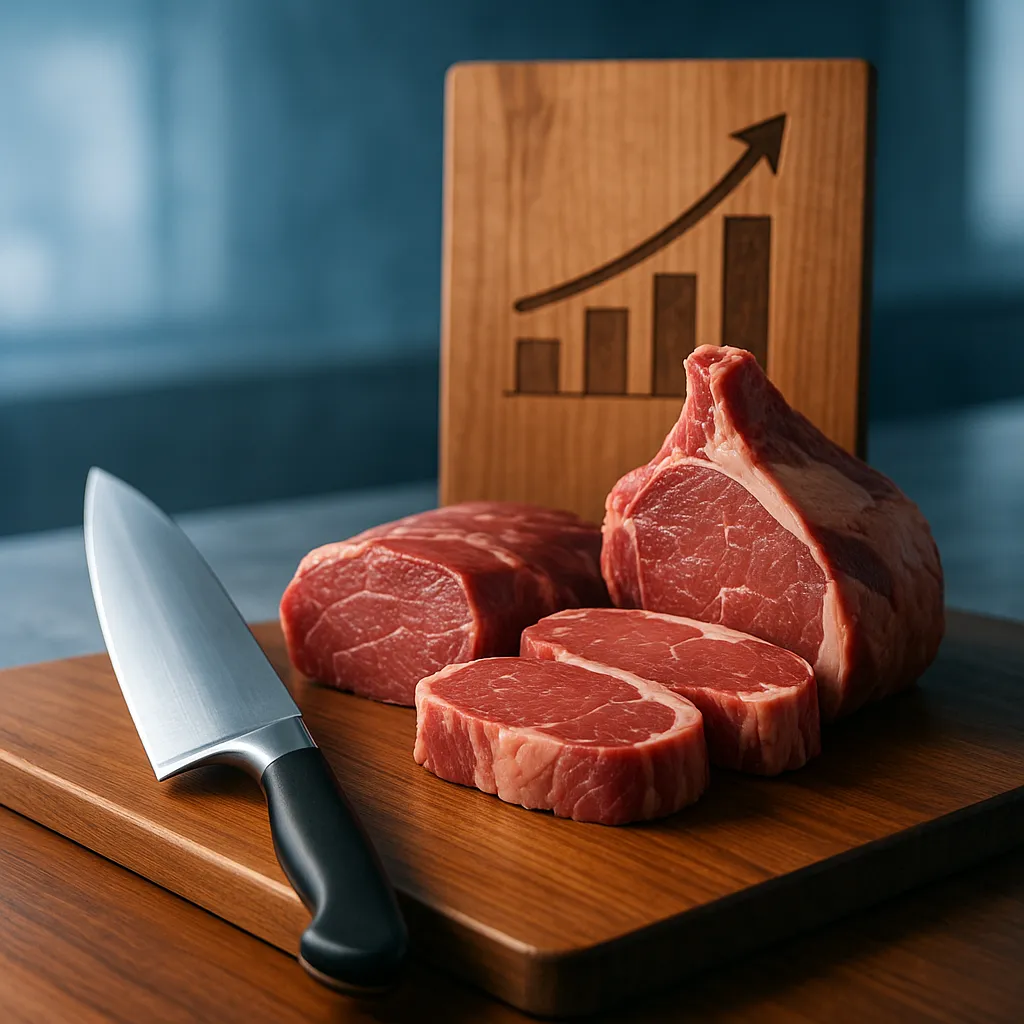
Butcher Shop Marketing Strategies: Moving Upmarket for Sustainable Growth
Butcher Shop Marketing Strategies: Moving Upmarket for Sustainable Growth
Introduction
Many small and mid-size butcher shops face a familiar problem: high operational costs, limited pricing flexibility, and stagnant profits. Even with steady sales, traditional models often struggle to generate sustainable margins.
By rethinking their positioning and adopting upmarket marketing strategies, butcher shops can transform their operations from break-even businesses into thriving, premium brands that attract loyal, high-value customers.
Understanding the Challenges of a Modern Butcher Shop
Local butcher shops that process for regional farms often operate on tight margins. High costs, limited rural purchasing power, and reliance on traditional retail make it difficult to scale profits.
In one example, 60% of total revenue came from farm processing, while retail sales provided the rest. Raising prices risked alienating loyal rural customers—but data showed that urban buyers were willing to pay more for quality, transparency, and specialty products.
This insight marked the turning point: to grow sustainably, the business needed to move upmarket and reach customers who value craftsmanship and quality over price.
Core Butcher Shop Marketing Strategies for Growth
These proven strategies can help butcher shops reposition themselves for stronger margins and long-term stability.
1. Move Upmarket with Premium Positioning
Rebrand as a boutique, high-end provider that emphasizes farm-to-table practices, ethical sourcing, and specialty handmade products like grass-fed meats and artisanal sausages. A premium brand identity attracts customers willing to pay for superior quality.
2. Target Urban Markets
Affluent city neighborhoods value exclusivity, convenience, and authentic stories. Expanding through targeted delivery and digital marketing allows butcher shops to reach these higher-yield audiences.
3. Diversify Revenue Streams
Go beyond walk-in retail. Launch an online storefront and introduce subscription-based butcher boxes offering curated, premium selections delivered directly to customers’ doors. This creates predictable, recurring revenue and long-term customer relationships.
4. Practice Transparent Pricing
When price adjustments are necessary—especially in farm processing—communicate openly about rising costs and quality improvements. Transparency builds trust and reduces resistance to price changes.
How to Implement Premium Butcher Shop Marketing Strategies
Moving from a traditional butcher shop to a modern, boutique-style business is best done step by step:
Define Your Value Proposition: Clarify what makes your business unique—animal welfare, sourcing transparency, or exclusive cuts—and make that story central to your brand.
Refresh Your Brand Image: Update store design, packaging, and online visuals to convey craftsmanship and exclusivity.
Develop an Online Sales Platform: Make it easy for customers to browse, order, and subscribe online, increasing accessibility and market reach.
Build a Reliable Delivery System: Partner with local couriers or set up in-house logistics to serve premium neighborhoods efficiently.
Launch Subscription Programs: Curated meat boxes for different preferences or occasions can build loyalty and recurring revenue.
Reward Loyalty and Referrals: Offer incentives for repeat customers and referrals to turn satisfied clients into brand advocates.
Benefits of an Upmarket Strategy
Implementing these butcher shop marketing strategies delivers tangible advantages:
Higher Profit Margins: Premium pricing supports sustainable growth and reinvestment.
Access to New Markets: Urban and online customers are less price-sensitive and value quality experiences.
Stronger Brand Loyalty: Consistency and exclusivity create emotional connections that keep customers coming back.
Predictable Revenue: Subscriptions and loyalty programs build recurring income and cash flow stability.
Overcoming Implementation Challenges
Transitioning to a boutique model requires careful planning and communication:
Train Your Team: Customer service and product knowledge are essential to delivering a premium experience.
Communicate Changes Clearly: Keep current customers informed about new offerings, price updates, and service improvements to maintain trust.
Start Small and Scale: Test delivery zones, online offerings, or subscription programs in limited areas before expanding based on feedback and performance.
Conclusion: Building a Sustainable, Profitable Future
For butcher shops seeking to grow beyond survival, moving upmarket offers a proven path to sustainable profitability.
By embracing premium branding, diversifying income streams, and reaching customers who value authenticity and quality, small and mid-size butcher shops can position themselves for long-term success. The key lies in clear communication, consistent execution, and a willingness to adapt to a changing market.
With the right strategy, even a traditional business can transform into a modern, thriving enterprise built for the future.
About Lior Izik
Lior Izik is a business strategist, coach, and entrepreneur who helps small and mid-size businesses achieve measurable growth and sustainable profitability. Through Lior Izik Business Consulting, he guides leaders to identify new opportunities, refine their positioning, and build strong, adaptable organizations.
Lior’s approach blends practical strategy with mindset development, helping business owners turn challenges into clarity—and potential into performance.